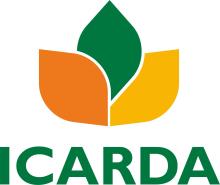Resource information
Teff, Eragrostis tef /zucc./ Trotter is one of the most important cereal crops in Ethiopia that occupies (32%), the largest cultivated area under cereals and 26% of the whole area cultivated to annual field crops by covering about two million hectares of land annually. Tef is adapted to environments ranging from drought stress to water logged soil conditions. It can be grown at altitude ranging from sea level to 3000m above sea level, with the maximum production occurs between 1700 and 2400m. Tef has its own unique qualities and advantages such as its tolerance to reasonable levels of both drought and water logging.
Tef is the principal crop of Ethiopia and stands first both in area coverage and production among cereals. However, the productivity of the current cultivars in the region is below the national average yield of tef under traditional practices (9.1 q/ha) and improved technologies (17-22 q/ha) on farmer fields. Even though research efforts in the last few decades developed important technologies to overcome production constraints and increase productivity, the productivity has not yet been raised to satisfactory level as compared to the potential. Factors contributing to low yields are practicing of inproper agronomic practices, drought, low soil fertility, soil erosion, poor crop management practices, insect pests and weeds. Among insect pests grasshopper, wollo bush cricket; tef shoot fly, locust and armyworm are some of the major once. Tef shoot fly attacks tef throughout the crop’s active growing period. However the seedling stage is the most critical. Tef production constraints such as lodging, drought, water logging, insect pest heat and frost might be overcome through a comprehensive agronomic practice program.
Development of improved and appropriate agronomic practices (seed rate, sowing dates, seedbed preparation, fertilizer type, rate and time of application), and cropping systems (crop sequence, relay cropping, intercropping, etc.) would greatly contribute to overcoming production constraints and improving productivity of tef.


